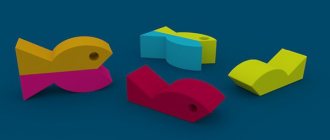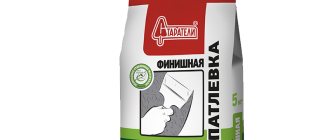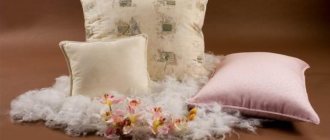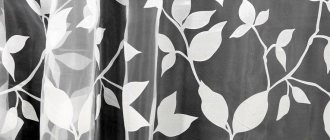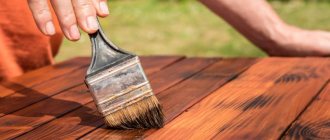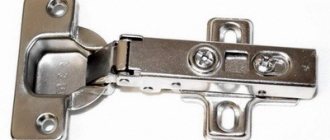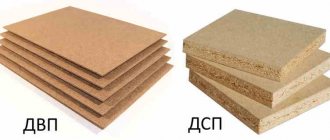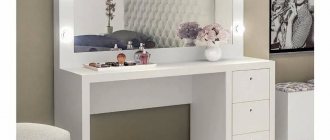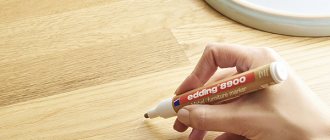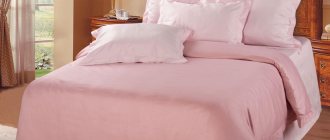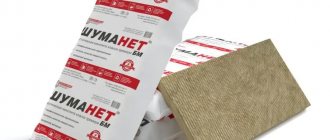Production of foam rubber
Polyurethane foam is 90% air; its production process consists of mixing certain components, a chemical reaction between which leads to foaming and hardening of the material.
Chemical production requires attention and strict adherence to technology. Before mixing, the components for the production of polyurethane foam are checked for qualitative and quantitative indicators. In a foaming machine, the components are mixed, the process of foam formation and maturation occurs without the direct participation of the operator.
The polyurethane foam mass is poured into molds; in the case of continuous production, it is placed on a conveyor belt, where the chemical reaction is completed. The time for complete hardening is about 3 days.
The process of cutting foam rubber is carried out on special machines. Cutting form: from simple cubes of different sizes to complex shapes and profiles.
Waste-free foam rubber production is ensured by installations for fine cutting (crushing) of waste.
Main parameters of PPU:
1. Density. An important indicator that largely determines the remaining characteristics of the finished product: rigidity, wear resistance, and the ability to restore its original shape. Indicates the amount of material (kg) contained in one cubic meter.
2. Stiffness (compressive stress). This is the amount of force required to compress the foam by 40%, measured in kPa.
3. Permanent deformation. Characterizes the ability of a product to maintain its shape and size. The sample, compressed by 50%, is kept at the established humidity and temperature, and the deviation from the original shape is measured after the external influence has ceased. Increasing the density reduces the amount of permanent deformation.
The above indicators, along with elasticity, strength, support and comfort coefficients, determine the types and brands of polyurethane foam.
Varieties
If we talk specifically about furniture foam rubber, then replacing it with material used in construction is not the best idea. Furniture production is constantly being improved, which allows us to improve technology and improve quality.
Several types of polyurethane foam are used simultaneously in sofas, since each section requires appropriate characteristics.
Foam rubber is divided into the following types:
- Standard. Marked with ST symbols. It is produced with different densities and can be used in various fields;
- Hard. You will recognize it by the HL marking. The best in terms of strength, but the scope of application is much narrower;
- Increased rigidity. Marked with EL. The structure is solid and can withstand heavy loads;
- Soft. It is labeled as HS. Creates comfortable landing surfaces, but easily bends under the influence of weight;
- Highly elastic. Its marking is HR. With relatively low rigidity it can withstand heavy loads. Easily and quickly restores shape;
- Viscoelastic. It can adapt to various forms of loads and weights, while distributing it over the entire available surface.
It’s difficult to say clearly which one is better. The price of products varies, which largely depends on parameters such as density, hardness and manufacturer’s brand. If we talk about how much a product costs, then prices can vary from several hundred to several thousand rubles, and sometimes more.
This is not really a complete classification. But in terms of filling the sofa, we are of little interest in non-flammable, secondary foam, reticulated and other subcategories of polyurethane foam.
Functions and Features
Various types of furniture foam are designed to perform specific functions and fill different compartments of the sofa. After all, when one sofa is made, it simultaneously includes several types of foam rubber with different characteristics.
- Standard. The most popular and widespread. It is used in furniture production and for self-assembly or restoration. It is actively used in the design of corner sofas and children's sleeping places. But the downside is that it can’t handle heavy loads. The densest option cannot withstand more than 90 kg of weight;
- Hard and polyurethane foam with increased rigidity. Well suited for sofas where people often sleep. These foams are used to fill mattresses. High density and no weight restrictions make this foam an excellent choice. But to increase comfort, it is recommended to lay another layer of polyurethane foam on top, but softer;
- Soft. Rarely used as the main filler in sofas. Designed for a softening function, therefore it acts as a layer after hard polyurethane foam. They are mainly used in the backs and cushions of sofas. It wears out quickly and does not last more than 5-6 years;
- Viscoelastic and highly elastic are quite exclusive, rarely found on sale and are expensive. They are used in the production of the most expensive and luxury furniture. The best types of foam rubber among all existing ones.
I think this is all clear. You can already understand where and what kind of foam rubber is best to use when assembling or restoring a sofa.
But I don't have everything yet. There are some useful tips that will finally help you make your choice and make the right purchase.
PPU brands
Polyurethane foam is marked with a series of Latin letters and numbers, the letters indicate the type of material, the numbers indicate density (kg/m3) and hardness (kPa).
- "ST" - standard. The basic brand is the only one that is produced on the basis of one basic polyol. The density indicator of a material determines its rigidity.
- "HL" - hard, "EL" - increased rigidity. It has a high load-bearing capacity, its structure allows it to withstand higher loads than standard brands.
- "HS" - soft and ultra-soft. The brand determines the most plastic of all types of polyurethane foam. Surface softness provides the greatest comfort to products made on its basis.
- HR" - highly elastic. It combines low initial stiffness and high load-bearing capacity, which makes it especially comfortable.
- "LR" - soft, viscoelastic. Characterized by increased viscosity and a “memory” effect. Capable of distributing the load over the entire plane. It is also called thermoplastic.
- "RTC" - reticulated polyurethane foam. Special treatment destroys the thin membrane, as a result, closed cells are transformed into open ones, and the porosity of the material increases significantly.
- Secondary foam rubber. This is the case when recycled waste is transformed into a new type, characterized by high quality indicators. It is characterized by high density, excellent insulating ability, open pores and cavities between large inclusions absorb sound waves almost completely.
New developments are constantly increasing the number of varieties of this synthetic material.
What orthopedic foam is used in expensive mattresses?
The most suitable for use in mattresses are foam rubbers with a density of at least 30 kg per m3.
This density is sufficient to support a sleeping person for a number of years. Of course, significant factors are the softness and elasticity of the foam. Without competition for the production of comfortable, high orthopedic PU foam mattresses with HR marking. They are often called artificial latex, and unscrupulous sellers sometimes pass them off as natural latex. To understand this issue well, we recommend reading our article about how different these materials are and how they affect health. In addition to excellent physical properties, these materials have virtually zero release of foreign substances. These cold foams are used in expensive European mattress models. The service life of HR50 foam is about 15 years. Such materials are expensive and are never included in cheap mattresses. In this video, a mattress manufacturer talks about various orthopedic foams.
PPU release form
The market offers a wide variety of forms, types, brands of polyurethane foam:
1. Leaf.
Manufacturers supply rectangular foam rubber with a thickness of 5 to 1000 mm in standard cuts, or according to individual customer requirements.
2. Rolled.
Reels of various widths are convenient to use, material thickness up to 30 mm. In addition to the usual, manufacturers offer rolled foam rubber made on a backing made of fabric or synthetic materials.
3. Block.
This type of foam rubber is distinguished by a hard, non-porous surface (before processing). In addition to cubic ones, this type of foam rubber is poured into molds of various configurations. After cooling, the crust is removed, the material acquires a homogeneous structure.
4. Acoustic.
They are supplied in the form of separate panels of two types: with relief and without relief. The panels have different shapes, colors, and sizes. In addition to its own properties, a significant increase in the sound absorption coefficient is ensured by the shape of the surface. For more information about acoustic foam rubber, read the article - Acoustic foam rubber: types, installation, sound insulation, price
Varieties
Foam rubber that “remembers”
Of all the options, the most interesting is foam rubber, which has “shape memory”. It has unique physical and mechanical properties, namely, it is slowly restored after removing the load. At first, such foam rubber exactly repeats the shape of the body lowered onto it, and when the load is removed, it begins to slowly return to its original position. For a sofa, this option will be the best choice - to make your rest truly comfortable.
About latex
This material is obtained by foaming rubber. The result is a material of natural origin, reminiscent of foam rubber. It also conforms to your body, making your rest comfortable. In addition, it also has antibacterial properties.
Latex foam rubber brand HR
This is an artificial material with a high degree of elasticity. It is much cheaper than natural latex. This material has a special cell structure. If foam rubber is usually cells of the same size and with walls of the same thickness (which are deformed equally and resist compression), then the HR brand has a completely different structure. These are cells that are different in size and heterogeneous in structure. Moreover, they are scattered in a chaotic manner, and their reaction to the load is ambiguous.
At low loads, only small cells with a small wall thickness work. This is how super soft foam works. If the load is significant, larger cells with greater compression resistance are used. This technique makes it possible to experience complete comfort, which is usually not so easy to achieve.
Foam rubber is the common name for polyurethane foam. The scope of application of this material, without exaggeration, covers all areas of human activity.
Cutting polyurethane foam
A soft, elastic material with small cells, foam rubber causes certain difficulties when it is necessary to give it a given shape. In industry, until recently, cutting presses were used. The creation of a shaped matrix, necessary for this type of processing, influenced the increase in the cost of the final product.
Currently, CNC laser machines are widely used. New devices significantly expand the use of polyurethane foam due to the ability to cut products of complex configurations without a significant increase in labor intensity. Laser cutting is performed silently, quickly, and no solid waste is generated during the cutting process.
Material selection
The bulk of the material on sale is low-density foam rubber up to 25 kg/m3; as furniture it is used mainly in children's furniture or in the backs of upholstered furniture together with denser brands.
So, when filling the seat of upholstered furniture, it is better to use material with a density higher than 30 kg/m3 (grades 3040, 3540, 3036), for the headrest you can choose a material with a lower density, and for children's furniture use soft brands up to 25 kg/m3 (2520, 2220, 1820, 1620) in combination with grades 2736, 3036.
Buy furniture foam rubber
Top
